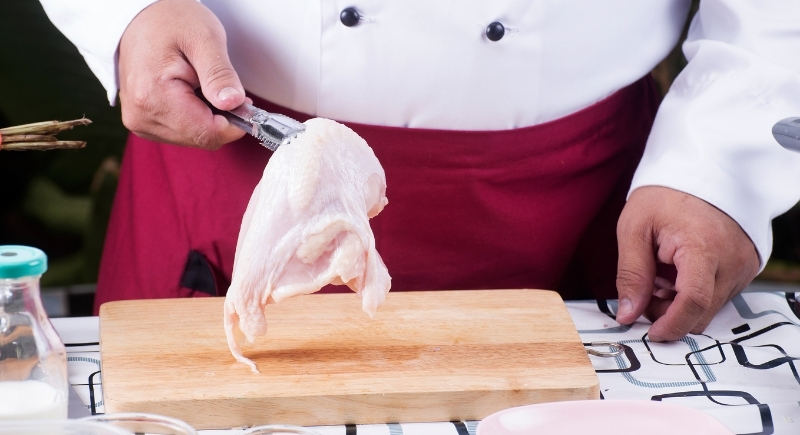Is That Brown Stuff in Your Chicken Normal?
If you’ve ever spotted brown liquid seeping from a cooked drumstick or wing, you’re not alone. The good news is that it’s not a safety issue, just a natural part of how chicken cooks. Here’s what it means.
What That Brown Stuff Actually Is

Image via Reddit/Panimated
The brown or reddish goo is most often bone marrow. When chicken cooks, especially at high heat, the marrow inside the bones liquefies and seeps through tiny pores. This typically occurs in younger chickens because their bones are not yet fully developed. Most chicken sold in grocery stores comes from birds only about seven weeks old, and their softer bones make it easier for the marrow to leak out during cooking.
If your chicken was frozen and then thawed, you might see even more of it. Freezing breaks down some of the bone and tissue cells and lets the marrow move around more freely when it heats up. That’s why it’s common to notice the brown stuff coming out of the ends of drumsticks or wings you’ve cooked straight from the freezer. It may look unappetizing, but it’s harmless.
Not Blood, Not Spoilage
Many people think it’s blood, but it’s usually bone marrow or heat-darkened muscle pigments — not fresh blood. Commercially processed chickens are drained of blood long before packaging. If your chicken smells normal, just like roasted meat, and the juices run clear once cut open, it’s perfectly fine to eat.
The only time color should make you nervous is when you spot a grayish tint, greenish patches, or signs of mold. Slimy or sticky textures are also red flags. Fresh chicken can range from bluish white to bright pink or even yellow, depending on the bird’s diet and breed. Color alone doesn’t mean something’s wrong.
Why You Don’t See It at Restaurants

Image via Getty Images/Kung_Mangkorn
It’s rare to find this on chicken wings from restaurants, and there’s a reason. Restaurants often use fresh, never-frozen meat or prep the wings differently. Many places parboil or pressure-cook chicken before frying, which locks in juices and prevents marrow from leaking. Freezing and thawing at home, on the other hand, makes that process a lot messier.
How to Keep Your Chicken Looking Clean
If the sight still bothers you, you can minimize browning by pre-cooking chicken before freezing it. However, there’s a risk that it may cause the spots to appear darker afterward.
More importantly, always check your meat with a food thermometer. Chicken should reach an internal temperature of 165°F throughout. Don’t rely on color alone to tell if it’s done because looks can be deceiving. Additionally, it’s important to store raw chicken in the refrigerator for only one or two days, wash your hands after handling it, and keep it separate from ready-to-eat foods.